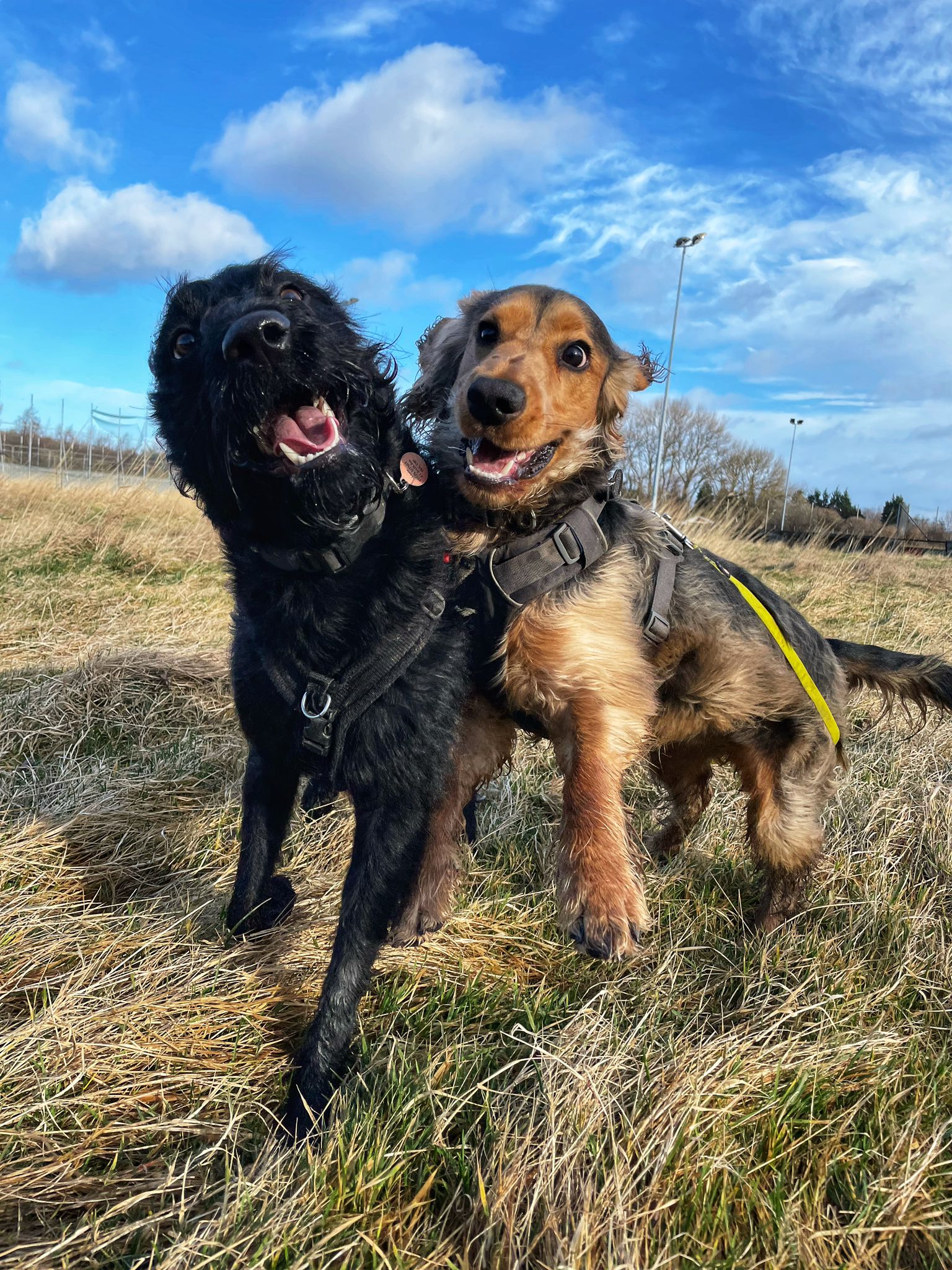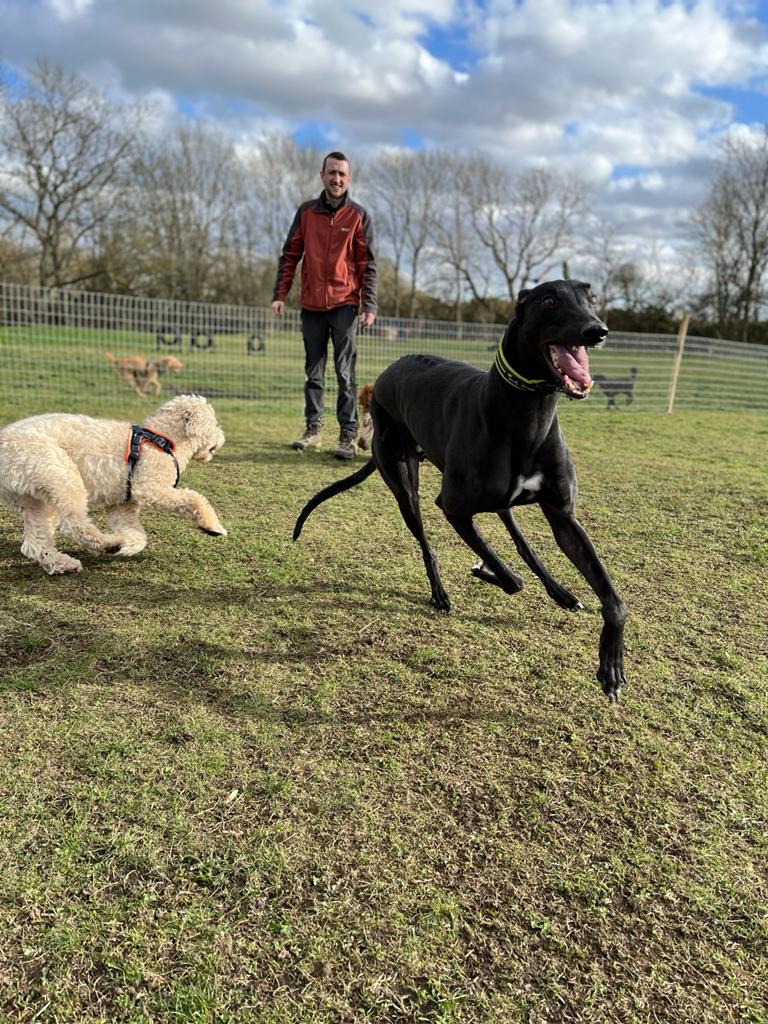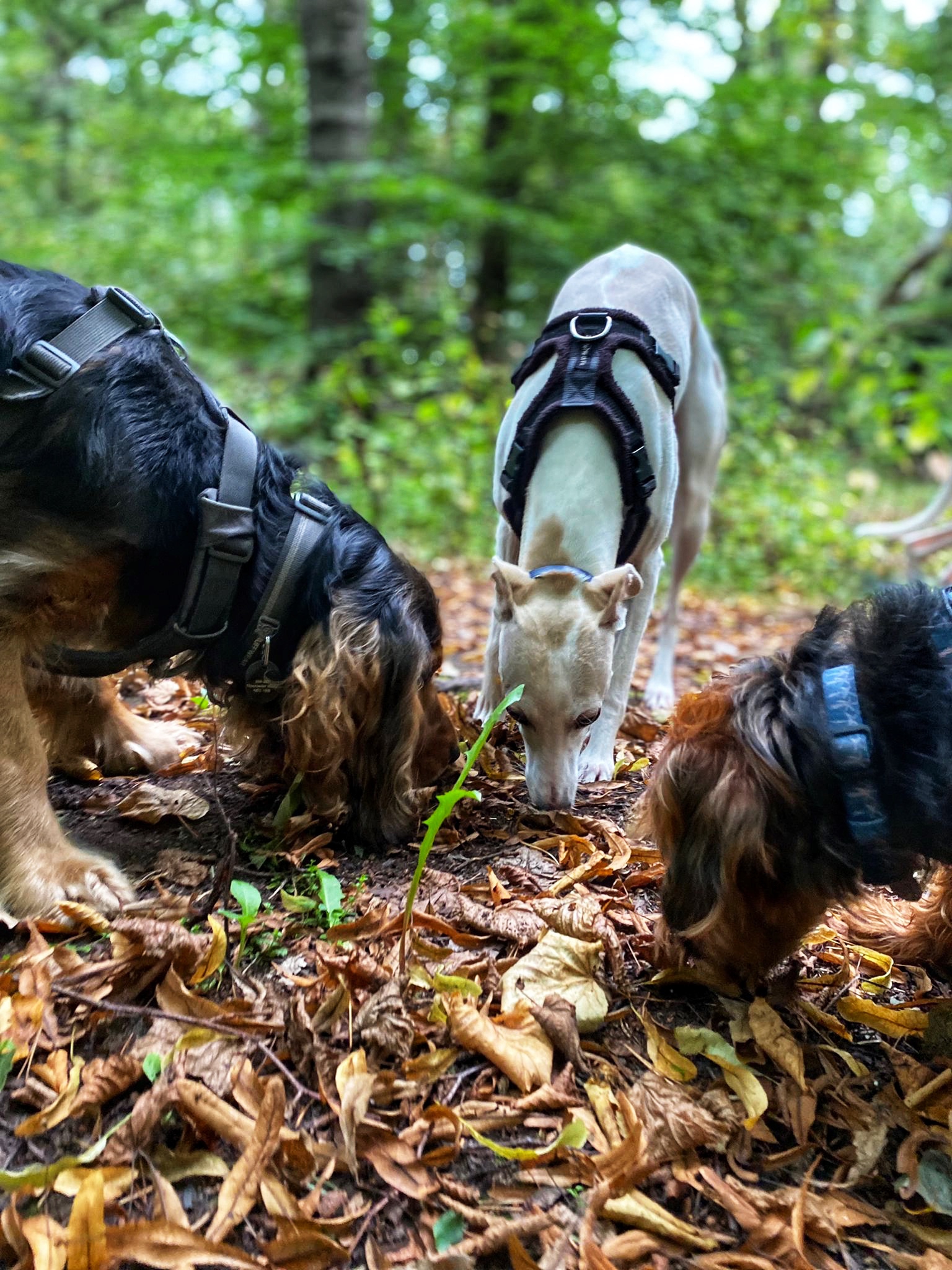What makes a good dog walk?
What makes a good dog walk?
If you’ve been on the hunt for a dog walker recently, chances are that you’ve come across terms such as ‘structured play’, ‘enrichment’ or ‘socialisation’. But you may be left wondering what these terms mean and what bearing they have on the quality of your dog’s walk.
Do not fear – in this short blog post we will unpack some of this terminology for you, and give you an idea of how all of these elements can come together to create a ‘good dog walk’ experience for your dog, whether they’re with you, or with your walker.
If you’re in the process of looking for a dog walker, you might want to ask them a little bit about whether or how they apply these principles in their own profession, so you can decide on whether or not the kinds of walks they offer match up with your own preferences and principles.

socialisation
First off, the big one – socialisation. As covered in our previous blog posts, in the wake of the pandemic, many of us in the dog walking profession found ourselves inundated with requests to take on puppy and adolescent dogs, not because owners were going to work, but because they wanted their dogs to have the opportunity for some much needed ‘socialisation’.
Socialisation has become a bit of a buzzword in recent years amongst dog owners and professionals, which is a great thing, as it reflects our growing understanding of dog behaviour. In another post here, we talk about the importance of socialisation for your dogs, and share some links to good resources from expert trainers and behaviorists who can provide advice on this.
However, in order for ‘socialisation’ to be successful for your dog, it requires careful management and monitoring of dog to dog interaction. This means matching dogs in terms of temperament, play style and breed, to ensure dog-to-dog interaction is a positive one at all times.
That’s why at Jess Fox & Hound walk packs are carefully curated according to size, age and play style to minimise the changes of negative interaction and injuries between dogs.
structured play
This leads us onto the second pillar in our trinity of dog walking principles – ‘structured play’. Again, this is a term that has become popular amongst dog walkers advertising their services recently but…what does it mean?
In short, structured play refers to play between dogs which is fun, but monitored at all times by a walker to ensure proper regulation and appropriate play. Most dogs LOVE to play, however not all dogs are good at recognising when play has been taken too far, or when another dog has had enough.
This is particularly true for puppies and adolescent dogs, who often go through long periods of boundary-testing and are more likely to miss ‘back off’ or ‘I’m finished’ signals from other dogs they’re interacting with. Certain breed types (e.g. our Jess Fox & Hound favourites, the lurcher) can also be predisposed to go into overstimulation mode when playing with very fast, or smaller dogs, with the same result. Nervous or anxious dogs may also just have less tolerance for extended play and may more quickly feel threatened by a persistent player than others.
It’s in these moments, where play is being forced on an unreceptive, or worried dog, that fights are most likely to break out. (What would you do, for example, if someone repeatedly got in your face and poked you for ‘fun’ when you’d clearly told them you’d had enough?). The job of a good dog walker is to monitor interactions between dogs in their pack and to carefully read the body language of those engaging in play to ensure that both players remain comfortable and confident at all times.
Here at Jess Fox & Hound, our focus on smaller pack walks (a maximum of 6 on a public walk and 10 with two handlers in a field) enables our walkers to make sure that play is structured at all times for dogs and, if things start to get a little overheated, walkers are able to remove dogs from these situations, or otherwise distract them, to ensure the pack dynamics stay happy and safe for all. Sometimes, the best way to achieve this balance is by giving dogs a break from their play for other fun activities, which brings us onto the next principle…


enrichment
Much like ‘structured play’, ‘enrichment’ has become a popular term amongst dog walkers of late – probably because these two foundations of good walks go hand in hand!
Enrichment refers to the other, non-play based activities that our dogs do every time they go out on a walk, and which result in stimulating, balanced walks for your hounds. You’ll possibly have heard dog trainers talk about the mental benefits of enrichment activities as a good substitute for walks for dogs who are either on medical rest, or reactive.
Enrichment activities can vary, and might include teaching dogs tricks or commands (thereby making them work their brains), using interactive food based toys (such as the Soda Pup or Kongs) or simply doing some good old fashioned sniffing.
Building enrichment activities into a walk, particularly doing command based-training and scentwork is a great way of tiring your dog out alongside running and play and for us it’s a foundation of walks at Jess Fox & Hound. Dogs are actively encouraged to use their noses when on walks with us, and if we ever need to cool down the pack dynamics for a while, we might do some light scentwork with them, hiding sprats in trees, or in leaves during the autumn to get those noses on the ground and working like nature intended ‘em to!
So those are the three pillars of dog walks at Jess Fox & Hound, and ones that as owners you can also be on the lookout to try and promote with your own dogs. And remember, if you like the sound of our foundations for your own dogs, give us a call, or fill out the enquiry form on this website and we’ll see about bringing your dog into our pack!
